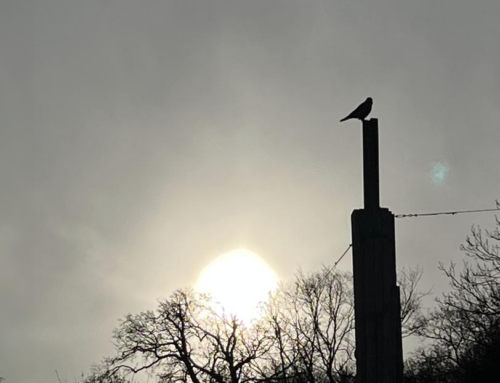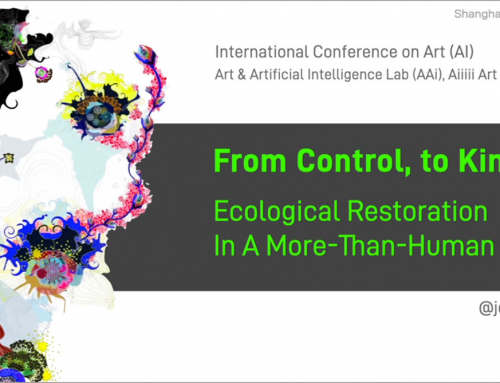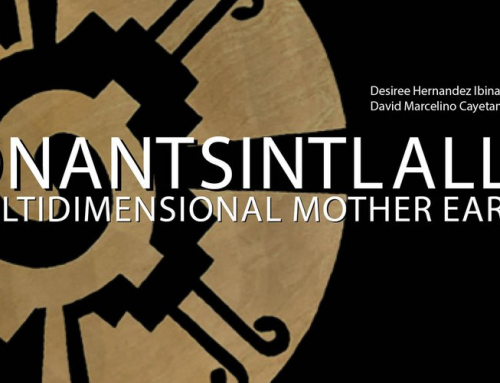“The world is in dire need of a narrative adjustment; that’s why we write” (Hamid Dabashi)
Since How To Thrive In the Next Economy was published in the autumn, my 29 conversations about the book have prompted all kinds of feedback. One question has cropped up repeatedly: In a world filled with melting ice caps, war, species extinctions, and economic peril, how can I possibly argue that the small-scale actions I write about can transform the bigger picture for the better?
My answer: It depends how you frame the picture. Take, for example, COP21. For many people I met, the outcomes of the climate summit in Paris were grounds for anger: A reference to “environmentally and socially sound technologies”was stripped out; aviation and shipping were simply removed from the agenda; and, although a warming limit of 1.5°C degrees is mentioned as a desired destination, the actual outcomes in the text lead us on a 3°C of warming pathway.
What most worries many policy experts I met is that 1.5°C number; it opens the way, they say, for the the so-called ‘overshoot scenario’. This describes a moment a few years ahead when, as the impacts of climate change intensify, panicked governments will feel compelled to deploy geoengineering fixes and so-called negative emissions technologies. As explained by Fred Pearce in Yale e360, “the real game, many believe, is to unleash the forces of capitalism in the name of fighting climate change”.
Foxes mobilised to save the rabbit? Sure. Quite apart from their vast costs, and the fact that they are unlikely to work, post-overshoot techno-fixes would almost certainly entail land grabs, social injustice, and a massive loss of biodiversity – as is happening, right now, with biofuel production.
The thing is, COP21 is not the only game in town. Around the world, millions of grassroots projects tell a different story to business-as-usual – but they are scattered and, for the most part, unseen. In Blessed Unrest, Paul Hawken estimates that there are a million such grassroots projects and rising – and their variety is dazzling: His appendix of project types, alone, is 100 pages long.
Some of these projects cluster, for the most part informally, in social solidarity movements such as Transition. When I started writing my book,Transition Towns had just just two groups; today there are more than 1,300 in 45 countries. And across the global south La Via Campesina, a coalition of 300 million small-scale farmers, is strengthening their agro-ecological approach to stewarding the land as well as defending their rights.
With their focus on social and ecological justice in everyday life, few of these social movements challenge mainstream political parties directly for power. Their impact is nonetheless political, but in a different way: As Transition founder Rob Hopkins puts it, “ultimately, you can get more done at the local level, and seeing real change happen rebuilds belief that it’s possible to shift power back.”
Belief in the possibility of change is a huge if intangible positive. So, too, is the proliferation of new social and economic models – from commoning, transition, and sharing, to local money, off-grid energy, and maker spaces. These are the infrastructure of the next economy – only they’re based on social energy, not concrete. For a taste of the scale and depth of what’s cooking check out the P2P Foundation website; hundreds of cases are also mapped on the Real Economy Lab website.
Technology plays an important if supporting role as a means for new social relationships to flourish. Using mobile devices, collaboration software and cooperation platforms, local groups don’t demand things like complementary currencies – they build them. Some new software also makes it easier to organise the governance of common goods, or manage trust in decentralised ways.
The most important technologies are more earthly, than virtual – those to do with the restoration of soils, watersheds and damaged land. The ClimateTECHwiki alone lists 260 promising techniques – from beach nourishment, t0 urban forestry.
But back to that first question: do these myriad stories add up to a viable alternative to the system that’s wrecking the place now? On their own, probably not. But for me, the most important unfolding transformation of all is the emergence, in many places at once, of a new understanding of our place in the world.
Take, for example, the Papal Encyclical on climate, Laudato Si. The Pope’s 700-page document, which is required reading for 1.2 billion students, tells an alternative story about the relationship between humans and the natural world. At its centre is the concept of ‘integral ecology’: The text calls on all peoples to be protectors of the environment; states that care for creation is a virtue in its own right; and advocates global solidarity as “a key value to direct our search for the common good.” By advocating a journey in which “social and ecological justice are brought into close relationship” Laudato Si goes way beyond mainstream environmentalism.
And Laudato Si is just one signal among many of this new story. Religious statements on climate change, man, and nature have also been made by the leaders of more than one billion Muslims, a billion Hindus, a billion Confucians, and 500 million Buddhists. By my reckoning, these teachings are reaching 75 per cent of world’s population.
Of course, if everyone did what they were told by religious leaders, there’d be no sin in the world. But these radical statements are not just about fluffy religious belief. They are reinforced by a paradigm shift in worldy science. In their studies of earth systems, biogeochemistry, systems ecology, and geophysiology, sceptical researchers are discovering that our planet is a web of interdependent ecosystems in which no organism is truly autonomous – including us.
Having worked hard throughout the modern era to lift ourselves ‘above’ nature, we are now being told by modern science that man and nature are one, after all.
This new story is, to put it mildly, a rather large ‘narrative adjustment.’ But it is neither utopian, nor fantastical. It speaks to our innate compulsion to change, progress, and create – indeed, to grow – but with new kinds of growth in mind: Soils, biodiversity and watersheds getting healthier; more cooperation and social connectivity; communities becoming more resilient.
Bioregions
The next step is to figure where and how to tell this compelling story in ways that people can relate to, and support, whatever their other differences.
A strong candidate for that connective idea is the bioregion. A bioregion re-connects us with living systems, and each other, through the unique places where we live. It acknowledges that we live among watersheds, foodsheds, fibersheds, and food systems – not just in cities, towns, or ‘the countryside’.
The design agenda for bioregions will therefore be the focus of our work this coming year – with these short courses as waypoints along the way:
Bioregionalism By Design: People, Place and Transformation
Schumacher College, UK, 25 April to 06 May
https://www.schumachercollege.org.uk/courses/short-courses/bioregionalism-by-design
http://www.doorsofperception.com/place-bioregion/bioregionalism-by-design-short-course-at-schumacher-college-england/
Stir To Action
On 9 and 10 July, I’m running a weekend workshop on bioregionalism with Stir To Action.
Doors of Perception Summer Xskool
Together with Konstfack, we will once again run a summer school in Sweden; details to follow.
I’ll also be developing the conversation around bioregions and design in these talks.




